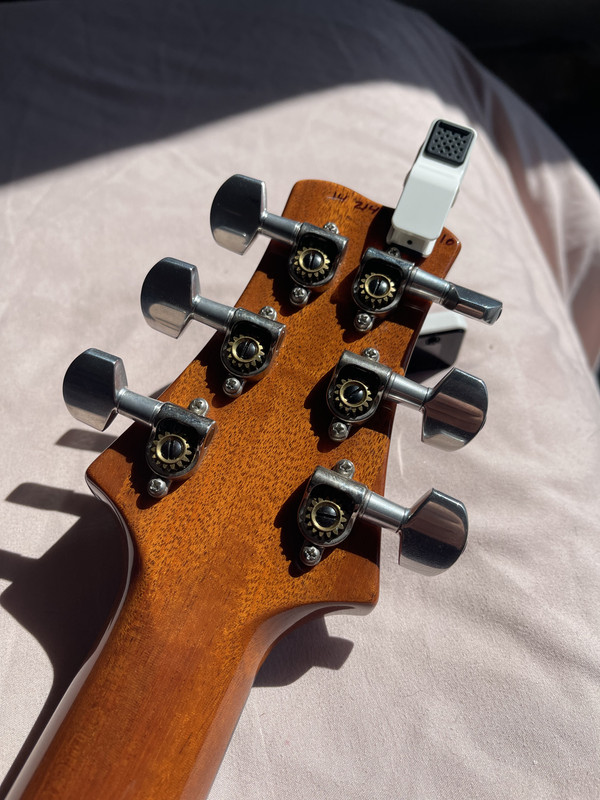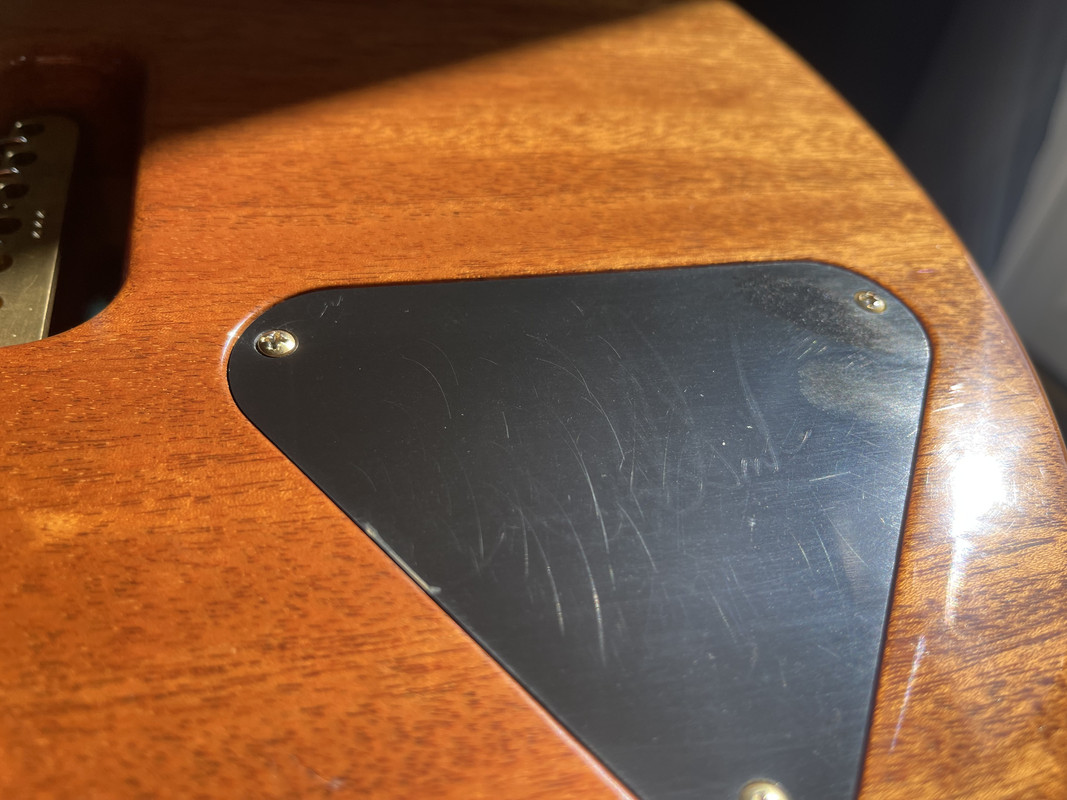David Oxford
New Member
- Joined
- Sep 10, 2018
- Messages
- 18
What do you like about the new design vs the old?I love the new tuners on my HB II. Another win for PRS.
What do you like about the new design vs the old?I love the new tuners on my HB II. Another win for PRS.
What do you like about the new design vs the old?
I definitely can appreciate your input. I think PRS needs to offer the original Phase III as an option still on their guitars rather than the newer less expensive design, perhaps as a cost savings option.I liked the locking feature on previous PRS tuners, but have been fine on all guitars I've owned without locking.
The lighter headstock end is a bonus on a hollowbody for balance. At least it seems like it is.
I was surprised how much I like the look, feel and experience with these tuners so I wouldn't swap them out even if someone offered to do it for free, I like the instrument exactly as it is.
I definitely can appreciate your input. I think PRS needs to offer the original Phase III as an option still on their guitars rather than the newer less expensive design, perhaps as a cost savings option.

My guess is that these tuners are reversible, similar to Sperzels.I'm not so sure they're less expensive. If they are, I don't think cost was the driver in the change, they were after a way to reduce weight on the headstock and the locking phase III's have the 6 steel locking screws and usually metal knobs that all add weight. You can also get locking if you really want them because they're still offered on trem models.
On these new tuners, there is an aluminum collar with a set screw between the buttons and the body of the tuner that doesn't look cheap at all. The tuners are still machined, open gears, the posts where the strings go through appear to be machined brass. and are rock solid. I don't see any indication of a reduction in quality. They had a lot of thought put into them and they're very well executed. In use, they don't jump at all while tuning, they are butter smooth right to the precise point you want them to be and they hold solid once there.

My guess is that these tuners are reversible, similar to Sperzels.
The tuner body is now symmetrical. The spacer makes it a modular design. Disassemble them and you can probably pull the worm gear and flip them to either side of the headstock.
That means they now only need to cast or machine one part instead of two. Definitely cost savings there.
Oh, I agree. When I first learned that Sperzel tuners are completely modular, I was like, "Why isn't everyone making them this way?" Casting unique left and right tuner bodies just seems wasteful and inefficient, not just from a manufacturing standpoint, but from assembly and inventory as well.That's just good engineering. I work for a manufacturing company and believe cost savings there would be negligible in this case. It's still done in batches with the same tooling and materials and the changeover from one part to the other is likely automated anyway. If they're cast, they're probably mirror images in the same mold.
I'm not so sure they're less expensive. If they are, I don't think cost was the driver in the change, they were after a way to reduce weight on the headstock and the locking phase III's have the 6 steel locking screws and usually metal knobs that all add weight. You can also get locking if you really want them because they're still offered on trem models.
On these new tuners, there is an aluminum collar with a set screw between the buttons and the body of the tuner that doesn't look cheap at all. The tuners are still machined, open gears, the posts where the strings go through appear to be machined brass. and are rock solid. I don't see any indication of a reduction in quality. They had a lot of thought put into them and they're very well executed. In use, they don't jump at all while tuning, they are butter smooth right to the precise point you want them to be and they hold solid once there.

I don't mind 'plastic'; it's all about the gears to me. My favorite 'vintage-style' tuners are Kluson Revolutions; 19:1 ratio and have no perceptible gear slip.They look like Phase III’s with a different tuner button, so no drop in mechanical reliability.
There was a lot of dislike for them when they were first announced. But they’re probably replaceable, the buttons that is, if people don’t like them.
Horses for courses.
I don't mind 'plastic'; it's all about the gears to me. My favorite 'vintage-style' tuners are Kluson Revolutions; 19:1 ratio and have no perceptible gear slip.
My all-time favorite are locking Gotoh 510s with a 21:1 ratio.
From what I've read, PRS Phase IIIs have no gear slip as well; their 15:1 ratio is...acceptable. I was on-the-fence when the new buttons were introduced, but I have come to like them on guitars where a vintage style tuner is appropriate.
As far as their purported benifit...I call b*llshit.


That top and finish...omg!
That top and finish...omg!
How is it, that it has no script on the back of the headstock?

Ohh La La!!!
Love that so much. Really happy that you didn't let that one get snatched by someone else.
Love that so much. Really happy that you didn't let that one get snatched by someone else.
Not that you needed much of a push. Still, happy to have aided.Oh me too. Thanks to you and @sergiodeblanc for the push.
I only remember saying what I’d buy and then… boom!Not that you needed much of a push. Still, happy to have aided.
I like them much better than the chrome ones...would actually prefer if they were black or same color as the headstock.
The article mentions:
So, what’s so innovative about these tuners? Well, cosmetically they're designed to echo the 12th fret bird wingspan design, but the change isn’t just ergonomic. Instead, they were “first and foremost” designed to increase the tonality of the guitars that feature them.
What do you guys think?
The rest of the article is here.
